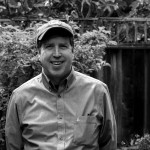Frame of Reference
by
John Holloran
Assigned the role of yearbook advisor, I reached for a digital camera and worked my way into photography, covering school events, growing my technique gradually, snapping thousands of images of students in sporting events, performances, dances, ceremonies. I learned to think in terms of what lies within the frame and took to using lenses to broaden or narrow my depth of focus or the computer to crop things out while editing. Photographic composition uses the ‘rule of thirds’; it divides up what I see, what is near or far away, what is in top, middle, and bottom thirds, as well as left, right, and center. How I frame a portrait determines what to include, what I leave out, how the combination creates an emotional response. It is an art that the craft cannot fully explain— something mysterious, intuitive.
Essays, too, have frames: foreground, background, focal points. A frame is a storyline, a coherent unit of writing: a single topic, narrative, meditation, technical description. When I view a photograph, my eye begins at the upper left corner and scans across right, then diagonally to the bottom left and across right again in a ‘Z’-shaped sweep. An essay’s opening frame begins, reappears, and then is the last thing one reads. This outer edge of the essay, as with the photo, should be interesting in itself but not the real subject; it is the context, the place where the eye begins to scan the horizon for an inner frame to establish what is at stake, the conflict, the question being asked. The outer frame should lead my reader in, and shifting frames begin to suggest an intersection, indirectly, by inference; I circle around the point at first, by way of tangents, tools of experience, literature, technical knowledge, personal narratives that help me develop a metaphor, where image and idea merge. The essayist can start and end a frame abruptly and cut to another part of another frame the way a movie editor cuts from one scene to the next. A composite photograph combines separate images with Photoshop to layer a single image; a composite essay asks readers to anticipate how its frames will converge.
When I write, I free-associate, walk about a topic, examine it from many angles; I track down literature; I write a frame and see where it leads me. Like a photo-compositor, I lay out pieces and see which to select, how to arrange them, before trimming or expanding, blending them to fit. I edit essays the way I edit photographs, cropping and adjusting levels, tone, and contrast until it feels right; the picture I create reflects who I am, provides access to my inner states, too. A finished essay, when it works, reveals something true, something real, and achieves a moment of transcendence when the craft, the technique, the tools fall away, and a window appears in the walls that divides us, a new frame of reference.
* *
John Holloran lives in Portland where he writes, teaches history, and is the Director of Studies at Oregon Episcopal School. His essays have appeared in Oregon Humanities, including After the Fall that was featured on OPB’s Think Out Loud. John’s essay, “Looking Up,” appeared in the Summer/Fall 2017 issue of The Timberline Review.
